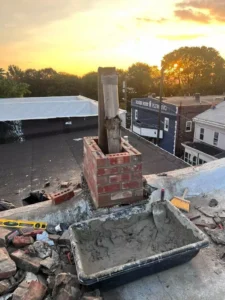The crackling warmth of a fireplace brings comfort to many Los Angeles homes during cooler evenings, especially in winter months when coastal temperatures drop. However, maintaining that cozy hearth requires regular attention and professional care. In this comprehensive guide, we’ll explore everything you need to know about fireplace cleaning in Los Angeles – from why it matters to how often you should schedule service.
Why Fireplace Cleaning Matters in Los Angeles
Despite our Mediterranean climate, Los Angeles residents use their fireplaces more than you might expect. Even with our mild winters, evening temperatures can drop significantly, making fireplaces both practical and atmospheric additions to many homes.
Regular fireplace cleaning offers several crucial benefits:
- Safety First: Creosote buildup in chimneys is a leading cause of house fires. This flammable substance accumulates over time and can ignite when temperatures rise.
- Air Quality: A dirty fireplace can release harmful particles and gases into your home, compromising indoor air quality.
- Efficiency: Clean fireplaces burn more efficiently, providing better heat output and using less fuel.
- Longevity: Regular maintenance extends the life of your fireplace system, protecting your investment.
- Compliance: Many homeowner’s insurance policies require regular chimney inspections and cleaning.
Signs Your Los Angeles Fireplace Needs Cleaning
Watch for these telltale indicators that it’s time for a professional cleaning:
- Fires that burn sluggishly or are difficult to maintain
- Unusual odors coming from the fireplace, especially when not in use
- Excessive smoke entering your room when the fireplace is operating
- Visible soot or creosote buildup (looks like black, flaky deposits)
- Animals or debris in your chimney
- It’s been over a year since your last inspection
How Often Should Los Angeles Homeowners Clean Their Fireplaces?
The National Fire Protection Association recommends annual chimney inspections for all homes with fireplaces, regardless of use frequency. However, cleaning frequency depends on several factors:
- Usage: Homes that use fireplaces frequently (more than twice weekly during cooler months) may need biannual cleaning.
- Fuel Type: Wood-burning fireplaces typically require more frequent cleaning than gas units.
- Wood Selection: Using unseasoned or resinous woods accelerates creosote buildup.
- Installation Quality: Poorly designed or installed systems may need more frequent attention.
For Los Angeles homes with moderate fireplace use, annual professional cleaning is generally sufficient. Gas fireplaces typically require less frequent cleaning but still benefit from annual inspection.
The Fireplace Cleaning Process
Professional Fireplace Cleaning in Los Angeles typically follow these steps:
- Preparation: Protecting your home’s interior with drop cloths and setting up specialized vacuum equipment.
- Inspection: Examining the fireplace, chimney interior, and exterior components for damage or excessive buildup.
- Cleaning: Removing creosote, soot, and debris using specialized brushes and tools.
- Smoke Chamber and Damper Cleaning: Addressing these critical components that often collect significant deposits.
- Final Inspection: Ensuring all systems function properly and identifying any areas needing repair.
- Documentation: Providing a detailed report of the service and any recommendations.
DIY vs. Professional Fireplace Cleaning
While some homeowners attempt DIY chimney maintenance, professional service offers several advantages:
Professional Benefits:
- Comprehensive inspection capabilities
- Specialized tools and equipment
- Expert knowledge of building codes and safety requirements
- Identification of potential problems before they become dangerous
- Proper disposal of hazardous materials
- Insurance and liability protection
DIY Limitations:
- Inability to properly inspect chimney interiors
- Risk of incomplete cleaning
- Potential for personal injury
- Possible property damage
- No warranty protection
Choosing a Fireplace Cleaning Service in Los Angeles
When selecting a chimney sweep, consider these factors:
- Certification: Look for technicians certified by the Chimney Safety Institute of America (CSIA).
- Experience: Companies with established history in Los Angeles understand local building styles and common issues.
- Insurance: Verify they carry liability insurance and workers’ compensation.
- Reviews: Check online reviews and ask for references from past customers.
- Detailed Estimates: Professional companies provide clear, written estimates before beginning work.
- Additional Services: Many companies offer related services like chimney repairs, cap installation, and fireplace updates.
Best Time for Fireplace Cleaning in Los Angeles
While chimney cleaning can be performed year-round, most Los Angeles homeowners schedule service during:
- Spring/Summer: Taking advantage of the off-season often means more appointment availability and sometimes better rates.
- Early Fall: Getting your system ready before the first use of the season, typically in November or December in Los Angeles.
Avoid waiting until the height of fireplace season (December-February) when service companies are busiest.
Cost of Fireplace Cleaning in Los Angeles
Pricing varies based on:
- Type and complexity of your fireplace system
- Amount of buildup present
- Accessibility factors
- Additional services needed
Most standard chimney cleanings in Los Angeles range from $150-$350, with additional costs for repairs or extensive cleaning needs.
Maintaining Your Fireplace Between Professional Cleanings
Between professional visits, these practices help maintain your fireplace:
- Proper Fuel: Use only properly seasoned hardwoods (stored for 6-12 months).
- Regular Ash Removal: Clean out ash when it reaches 1 inch, but always leave about ¼ inch for insulation.
- Glass Cleaning: For fireplace doors, use specialized glass cleaner or a vinegar solution.
- Exterior Wiping: Regularly dust mantel and exterior surfaces.
- Damper Check: Periodically verify your damper opens and closes properly.
- Cap Inspection: Visually inspect your chimney cap if safely visible from ground level.
Fireplace Safety Tips for Los Angeles Homes
- Install Detectors: Ensure functioning smoke and carbon monoxide detectors near fireplace areas.
- Clear Zone: Maintain a 3-foot “kid-free zone” around the fireplace.
- Screen It: Always use a proper fireplace screen or glass doors.
- No Accelerants: Never use gasoline, charcoal lighter, or other flammable liquids.
- Holiday Decorations: Keep decorations at least 3 feet from heat sources.
- Disposal Plan: Dispose of ashes in a metal container stored away from structures.
Conclusion
Regular fireplace cleaning isn’t just a maintenance task—it’s an essential safety practice for Los Angeles homeowners. By understanding the importance of professional service and following proper maintenance procedures, you can enjoy your fireplace with confidence throughout our mild Southern California winters.
Whether you have a historic fireplace in a Los Feliz Craftsman or a modern gas unit in a Marina del Rey condo, proper care ensures your hearth remains a source of warmth and comfort rather than worry. Schedule your annual inspection today and keep your home safe and cozy for years to come.
Most experts recommend annual inspections and cleaning for Los Angeles homes with fireplaces. However, if you use your fireplace frequently (more than twice weekly during cooler months), you may need biannual service.
Watch for sluggish fires, unusual odors, excessive smoke entering your room, visible soot or creosote buildup, animal sounds, or if it’s been over a year since your last inspection.
Most standard chimney cleanings in Los Angeles typically range from $150-$350, though prices may vary based on your system’s complexity, amount of buildup, accessibility factors, and any additional services needed.
While some basic maintenance can be done yourself, professional cleaning is recommended for safety and thoroughness. Professionals have specialized equipment to properly inspect and clean chimney interiors and can identify potential problems before they become dangerous.
Spring/summer (off-season) typically offers better appointment availability and sometimes lower rates. Early fall (before November) is also ideal to prepare your system before the first use of the season. Avoid December-February when service companies are busiest.





